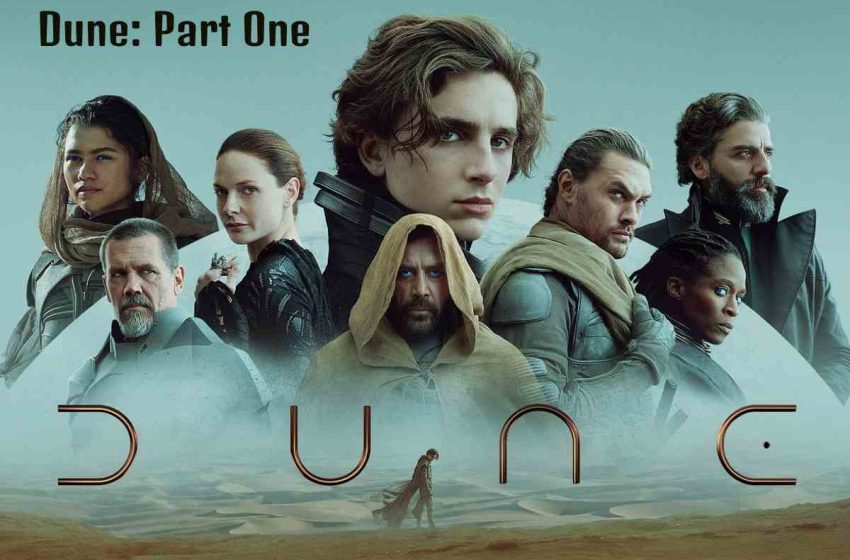
Dune: Part One is one of the most highly anticipated science fiction films in recent years, and its release has been a monumental event for fans of the genre. Directed by Denis Villeneuve, Dune: Part One is an adaptation of Frank Herbert’s groundbreaking 1965 novel Dune, which is widely considered to be one of the most important works in science fiction literature. The film explores the story of Paul Atreides, a young nobleman whose family is tasked with ruling the desert planet Arrakis, the only source of the universe’s most valuable resource: spice. In this article, we’ll explore why Dune: Part One has captured the imagination of viewers and critics alike.
Table of Contents
The Epic World of Dune: Part One
At its core, Dune: Part One is an exploration of politics, religion, and power set against a vast, unforgiving desert world. The film opens on the planet Caladan, where Paul Atreides (played by Timothée Chalamet) lives with his family before they called to take control of Arrakis. As the story unfolds, Paul finds himself thrust into a world of political intrigue, betrayal. And power struggles as various factions vie for control over the spice that fuels the galaxy.
One of the most striking aspects of Dune: Part One is the sheer scale of its world-building. Villeneuve has taken the time to immerse audiences in a fully realized universe, with stunning visuals of sweeping deserts, massive sandworms, and intricate set designs. The film does an excellent job of capturing the vastness of the Dune universe, which is essential to understanding the stakes of the story. The desert planet of Arrakis is a character in its own right. With its harsh environment serving as a backdrop to the characters’ personal journeys.
The Complex Characters of Dune: Part One
The characters in Dune: Part One are as complex and multifaceted as the world they inhabit. At the heart of the story is Paul Atreides, who portrayed by Timothée Chalamet with great depth and vulnerability. As Paul struggles to come to terms with his destiny, his journey is one of self-discovery, fate, and ultimately, power. Chalamet’s performance as the young heir to the House Atreides captures the internal conflict Paul faces as he navigates the dangerous political landscape of Arrakis.
Supporting characters such as Duke Leto (Oscar Isaac), Jessica (Rebecca Ferguson), and Duncan Idaho (Jason Momoa) all bring their own unique qualities to the story, adding layers of intrigue and emotional weight. Each character given enough screen time to develop, making them more than just plot devices. The performances of the cast elevate the material, bringing the complex relationships between these characters to life.
Dune: Part One – Stunning Visuals and Cinematic Craftsmanship
Visually, Dune: Part One is nothing short of breathtaking. Villeneuve’s direction, combined with the cinematography by Greig Fraser, creates a visually immersive experience that transports audiences into the world of Arrakis. The sweeping desert landscapes, towering sand dunes, and massive spaceships are all rendered with meticulous attention to detail. Every shot in the film feels purposeful, contributing to the overall atmosphere and tone of the story.
The special effects in Dune: Part One are equally impressive, with the sandworms—gigantic creatures that live beneath the surface of Arrakis—being a particular highlight. The film’s use of practical effects, combined with CGI. Creates a sense of realism and immersion that makes the science fiction world feel grounded. The attention to detail in the design of both the technology. And the natural environment of Arrakis speaks to the effort that has gone into creating a visually stunning adaptation of Herbert’s work.
The Importance of Dune: Part One for the Sci-Fi Genre
Dune: Part One represents a new era of sci-fi filmmaking. It brings a sense of grandeur and depth to the genre, elevating it beyond the typical action-packed blockbuster fare. By focusing on the political and philosophical themes at the heart of Herbert’s novel. Villeneuve has created a film that appeals to both fans of traditional sci-fi. And those looking for a more thoughtful, cerebral experience.
The film also addresses themes of ecological destruction, imperialism. And the complex relationship between humanity and its environment, which resonate deeply with modern audiences. In an era where global challenges such as climate change and resource scarcity are at the forefront of public discourse. Dune: Part One feels relevant and timely.
What’s Next for Dune: Part One?
With Dune: Part One being only the first half of the story, fans are eagerly anticipating the sequel. The film ends on a cliffhanger, setting the stage for the next chapter in Paul’s journey. Villeneuve has already confirmed that Dune: Part Two is in the works, and fans can expect more action, political intrigue. And character development as the saga continues. With such a strong foundation laid in Dune: Part One, the future of the Dune series looks incredibly promising.
Conclusion
Dune: Part One is a masterfully crafted film that offers a stunning visual experience. A deep and thought-provoking narrative, and unforgettable performances. Denis Villeneuve created a cinematic world that will resonate with viewers for years to come. Whether you’re a fan of the original novel or new to the Dune universe. Dune: Part One is a must-watch for anyone who appreciates epic storytelling and breathtaking visuals. With its careful attention to detail, the film sets the stage for the continuation of a sci-fi saga that destined to become a classic in the genre.



